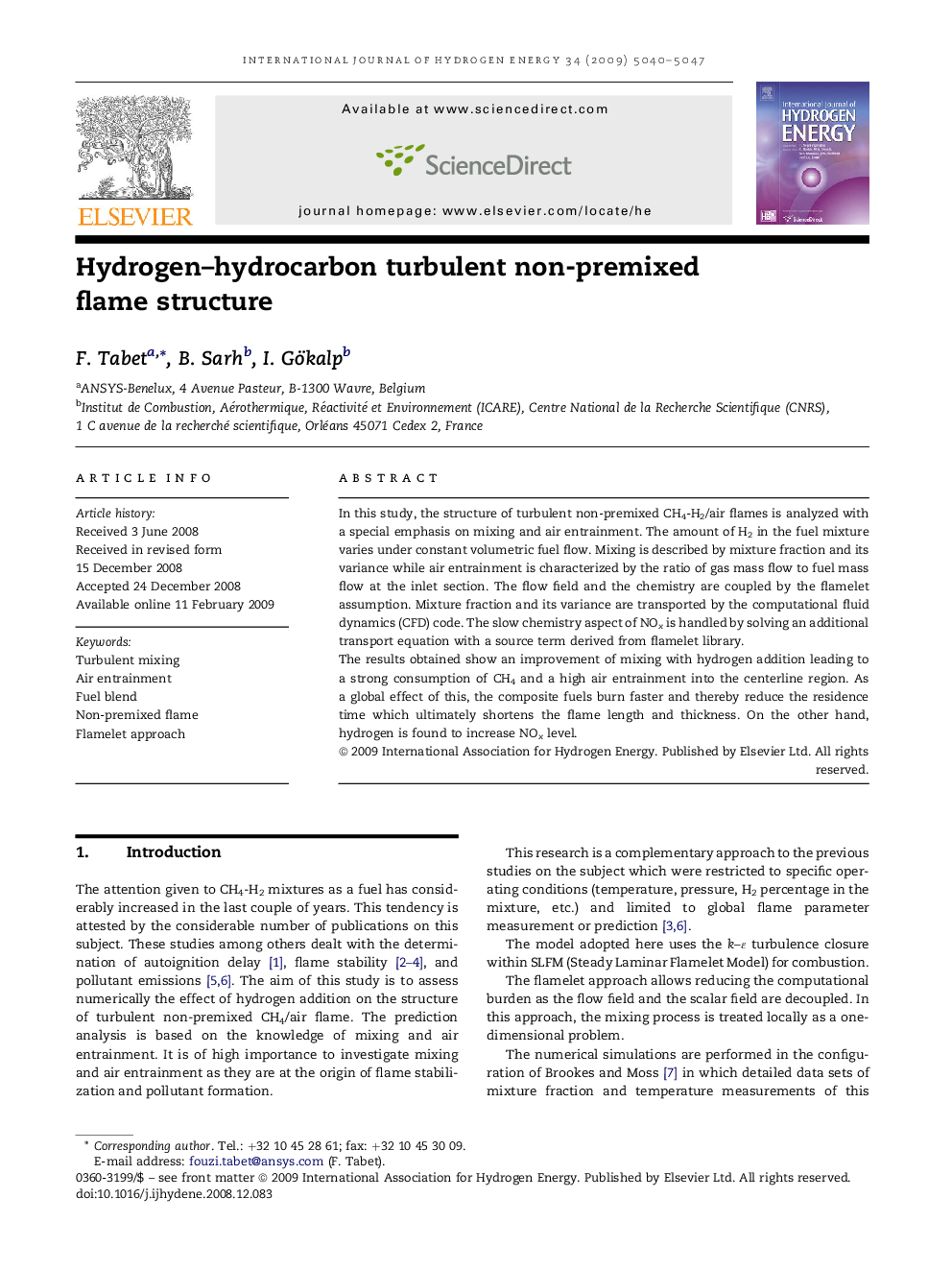| Article ID | Journal | Published Year | Pages | File Type |
|---|---|---|---|---|
| 1277895 | International Journal of Hydrogen Energy | 2009 | 8 Pages |
In this study, the structure of turbulent non-premixed CH4-H2/air flames is analyzed with a special emphasis on mixing and air entrainment. The amount of H2 in the fuel mixture varies under constant volumetric fuel flow. Mixing is described by mixture fraction and its variance while air entrainment is characterized by the ratio of gas mass flow to fuel mass flow at the inlet section. The flow field and the chemistry are coupled by the flamelet assumption. Mixture fraction and its variance are transported by the computational fluid dynamics (CFD) code. The slow chemistry aspect of NOx is handled by solving an additional transport equation with a source term derived from flamelet library.The results obtained show an improvement of mixing with hydrogen addition leading to a strong consumption of CH4 and a high air entrainment into the centerline region. As a global effect of this, the composite fuels burn faster and thereby reduce the residence time which ultimately shortens the flame length and thickness. On the other hand, hydrogen is found to increase NOx level.
